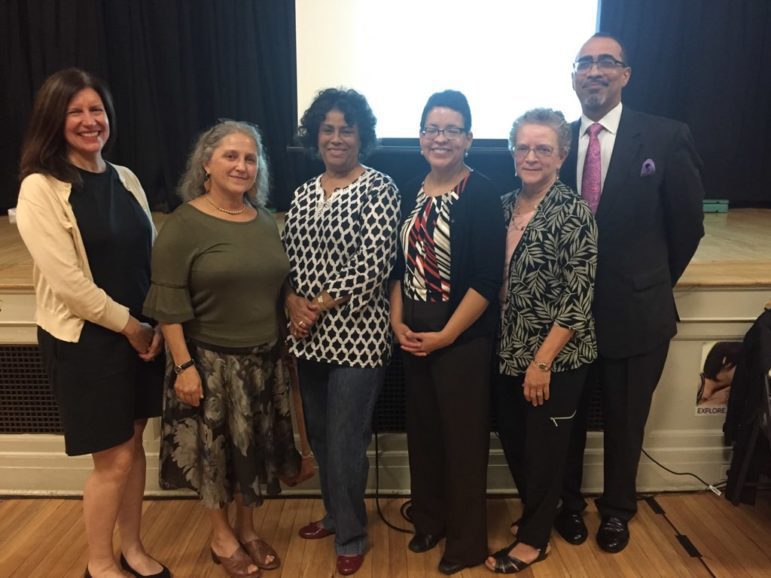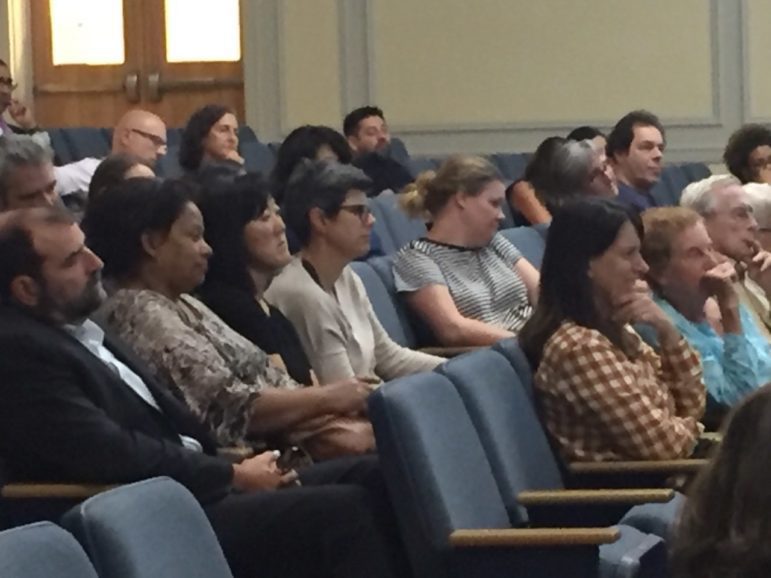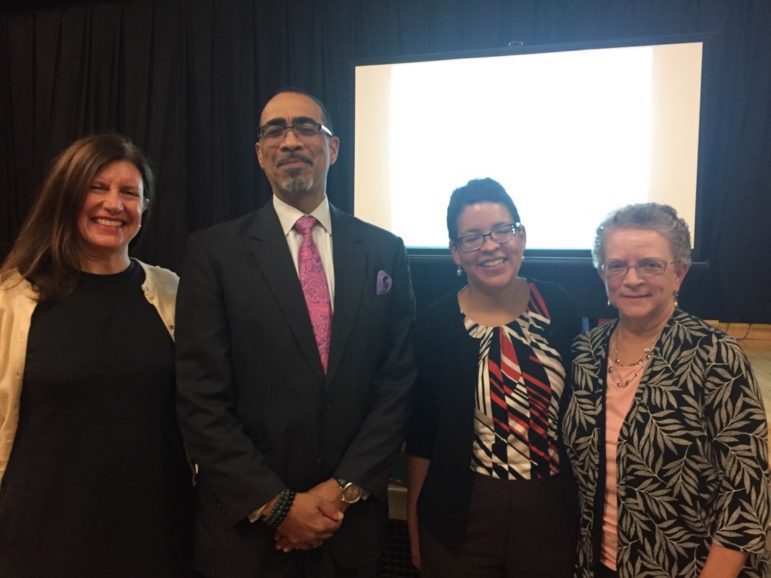To set the stage for the discussion of educational racial equity and integration in South Orange-Maplewood and the state, South Orange/Maplewood Community Coalition on Race Executive Director Nancy Gagnier began the evening with an excerpt from the Coalition’s Demographic Report (Click here for the Report or download below). She highlighted changing racial demographics since 1997, pointing out that the schools are becoming whiter, have shown an increase in the Hispanic population and a smaller increase in the Asian population, and drop in the number of Black students. She also noted how redrawing attendance zones has resulted in increased school integration in SOMSD, but those past changes are now compromised by new residential patterns and changing demographics. The district has made efforts to integrate schools and classrooms and we are at a new place in which we need to focus on elementary school integration and integrated classrooms. She concluded with the thought that to maintain our community character as a diverse, welcoming, and inclusive community, the schools have to serve all children well.
New Jersey State Assemblywoman Mila Jasey spoke from her personal perspective as a parent who raised three children in the South Orange-Maplewood district and as a former Board of Education member about how difficult it has been over the years to create change that results in integrated schools and classrooms. She focused mostly on the Marshall-Jefferson pairing, saying that there was a lot of hand-wringing and worry on the part of the adults. Some threatened to move away, and others to send their kids to private school—refrains that have been heard in conjunction with other changes like redistricting and de-leveling. She assured parents that through all the changes, the kids were alright. In fact, the kids adjusted fine and the changes were ultimately big benefits for most students.
Following Ms. Jasey, Elise Boddie set up her comments by making the distinction between desegregation and integration: the former describes the legal barriers that exist and the latter an ethical move toward racial equity. She then told her personal experiences with school integration: her mother was part of an integration effort in Ohio three years before Brown vs. Board of Education; Elise was bussed in California starting in kindergarten; and now her son is in an integrated in NJ. She said the process to make this a reality everywhere is an “intergenerational struggle with intergenerational benefits.” She said that she takes on this fight today as people did for her in the past.
Right now, Boddie reported that New Jersey is the 6th most segregated state in the United States, exceeding all of the southern states. In the south, she said, school desegregation worked for 20 years because the courts and legislatures enforced it. New Jersey’s residential patterns—holdovers from the days of redlining—perpetuate school segregation. Because school districts are tied to municipalities and funded by property taxes, these divisions disadvantage students of color throughout the state and have also resulted in concentrations of poverty. Camden and Essex Counties are the most segregated in NJ.
According to Boddie, it is immoral and unjust to have this degree of segregation which she said is a tool of oppression. Boddie is involved at the state level advocating for statewide school integration. “Separate but equal doesn’t work: we must disrupt the incentives in our system that encourage people to hoard resources.” She also said that this level of segregation is as corrupting to white children as it dis-serves children of color.
During the question and answer period, the panelists addressed concerns about what can be done in SOMA locally and what effect that might have, if any, on the larger state issue. Given the diversity of the state and the changing demographics of the nation, panelists said that integration can potentially save public schools by resisting the retreat to homogeneous communities and private and charter schools. They felt that the South Orange-Maplewood School District has a unique opportunity to be a leader and a model for integrated schools and classrooms. Modeling could also be an advantage at the state level. Panelists said that South Orange-Maplewood must continue to work to serve all children well and equitably, with special attention to curricula and anti-bias education.
Coalition on Race Chair Robert A. Marchman closed the evening with a reminder about the nation’s changing demographics and the necessity that all children receive an excellent education. He reiterated the community’s role in making SOMA a model for other communities and the need for community support to make the change happen.
The Community Coalition on Race thanks the Schools Committee for convening this panel and for the guest speakers Mila Jasey and Elise Boddie. Thanks to the school district for hosting at the Montrose Early Childhood Education Center.



